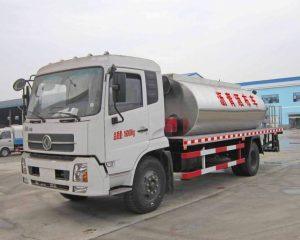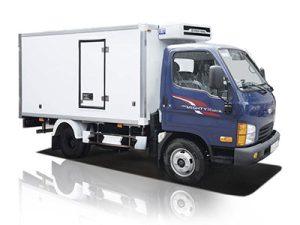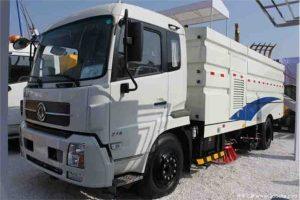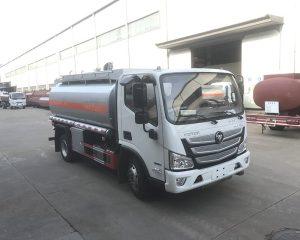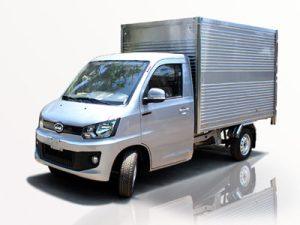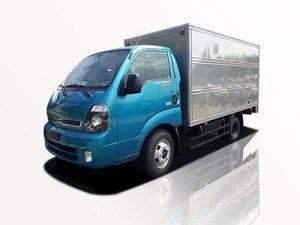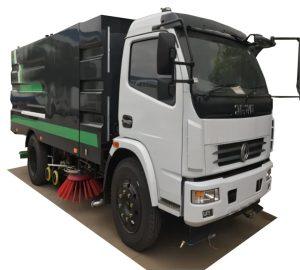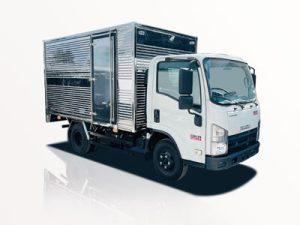Monday to Saturday - 8:00 -17:30
Everything You Need to Know About Dry Van Trucks
Introduction
Dry van trucks are an essential part of the logistics and transportation industry. These trucks are designed to transport cargo that requires protection from external elements, making them a preferred choice for many businesses. Whether you’re unfamiliar with the logistics industry or are seeking to understand the operation and benefits of dry van trucks, this comprehensive guide will provide you with all the information you need. We’ll explore what dry van trucks are, their features, advantages, maintenance tips, and much more.
What is a Dry Van Truck?
A dry van truck is a type of trailer used to transport cargo safely and securely. Unlike other types of trucks, such as flatbeds or refrigerated vans, dry vans are fully enclosed and provide complete protection against weather and road debris. Typically constructed from aluminum or steel, dry vans can carry various types of cargo, including freight, consumer goods, and packaged items.
Types of Dry Van Trucks
Dry van trucks can generally be categorized into several types based on their size and application:
- Standard Dry Van: Most common type used for general freight.
- High Cube Dry Van: Offers extra height for oversized cargo.
- Specialized Dry Van: Designed for specific needs (such as beverage transport).
Key Features of Dry Van Trucks
Understanding the key features of dry van trucks can help you make informed decisions when considering transportation options. Here are some of the most important features:
Enclosed Design
The fully enclosed nature of dry vans protects cargo from rain, wind, and road debris. This is especially important for goods that are sensitive to moisture or temperature fluctuations.
Loading Mechanisms
Dry vans typically feature rear doors, which can include swing doors or roll-up doors for easy loading and unloading. Many also incorporate loading ramps for enhancing accessibility.
Weight Capacity
Most dry van trucks are built to handle payloads ranging from 10,000 to 45,000 pounds, making them suitable for transporting various types of freight.
Dimensions
Standard dry van trailers are typically 28 to 53 feet long, allowing for large amounts of cargo. The height ranges from 8.5 to 9.5 feet, depending on the trailer size.
Advantages of Using Dry Van Trucks
Choosing dry van trucks for transport offers numerous advantages. Here are some prominent benefits:
Protection from Environmental Elements
With their enclosed design, dry vans shield cargo from rain, wind, and dirt, reducing the risk of damage to goods.
Versatility
Dry vans can carry a wide array of cargo types, making them suitable for industries ranging from retail to manufacturing.
Increased Security
Lockable doors and tough exterior materials provide additional security for the cargo, reducing the risk of theft and damage.
Cost-Effective
Due to their versatility and durability, dry vans can save money in the long run, as they reduce the need for special handling and additional trailers for various cargo types.
Common Uses for Dry Van Trucks
Dry van trucks serve a variety of purposes across multiple industries. Here are some common uses:
Retail and E-Commerce Shipping
Many retailers, especially those engaged in e-commerce, use dry vans to transport goods from warehouses to fulfillment centers or directly to customers.
Manufacturing and Distribution
Manufacturers often rely on dry vans to move their products to distribution centers or retailers, ensuring that items arrive safely and undamaged.
Construction Supply Transportation
Some construction companies utilize dry van trucks to transport tools, equipment, and building materials securely.
Maintenance Tips for Dry Van Trucks
Proper maintenance of dry van trucks is crucial for safety and longevity. Here are some essential tips for maintaining these vehicles:
Regular Inspections
Conduct daily pre-trip inspections to ensure all components, including brakes, tires, and lights, are in good working condition.
Cleaning and Maintenance of the Interior
Regularly clean the interior of the trailer. Dirt and debris can cause damage to the cargo being transported.
Check Seals and Weather Stripping
Inspect the door seals and weather stripping for wear and tear, as these prevent moisture ingress and protect the cargo inside.
Choosing the Right Dry Van Truck for Your Needs
Selecting the right dry van truck involves several considerations. Here’s a guide to help you:
Evaluate Your Cargo Needs
Consider the type, size, and weight of the cargo you intend to transport. Make sure the dry van’s capacity meets your requirements.
Consider the Route
Understand the routes you’ll be taking. If you frequently travel through urban areas, a shorter trailer may be more suitable.
Assess Budget and Costs
Factor in both the purchase price or rental costs along with operational costs, including fuel efficiency and maintenance.
Practical Examples of Dry Van Truck Usage
Illustrating practical examples can provide insight into how dry van trucks are utilized:
Example 1: Retail Distribution
A national retail chain uses dry vans to deliver clothing and accessories from distribution centers across the country to various store locations. By utilizing scheduled deliveries and maintaining a fleet of dry vans, they optimize inventory and meet customer demands efficiently.
Example 2: E-Commerce Shipping
An e-commerce company relies on dry van trucks to fulfill online orders. Products are shipped from multiple warehouses directly to customers. The enclosed design ensures that items arrive in pristine condition, enhancing customer satisfaction.
Future Trends in the Dry Van Truck Industry
As technology evolves, several trends are emerging in the dry van truck industry:
Use of Advanced Telematics
Telematics will soon play a crucial role in optimizing routes and improving fleet management, leading to better fuel efficiency and lower operational costs.
Jump to Electric Dry Vans
The shift toward electric vehicles is gaining traction, with manufacturers developing electric dry van trucks that are more environmentally friendly and cost-effective.
Adoption of Autonomous Driving Technology
While still in its infancy, the development of autonomous driving technology may revolutionize how dry vans operate, increasing safety and efficiency.
FAQ Section
1. What are the dimensions of a standard dry van truck?
Standard dry vans typically range between 28 to 53 feet in length and 8.5 to 9.5 feet in height.
2. Can dry van trucks carry refrigerated items?
No, dry vans are not designed for refrigerated items. Instead, refrigerated vans or reefer trucks should be used for temperature-sensitive items.
3. How do I choose the right size dry van for my business?
Evaluate the weight and dimensions of your cargo and consider the specific requirements of your transportation routes.
4. What are the weight limits for dry van trucks?
Most dry vans can carry a payload ranging from 10,000 to 45,000 pounds, depending on the truck specifications and regulations.
5. How often should dry van trucks be maintained?
Regular maintenance should be performed according to manufacturer recommendations, and pre-trip inspections should be conducted daily.
6. What types of cargo are most commonly transported in dry vans?
Common cargo types include consumer goods, retail merchandise, electronics, and building materials.


